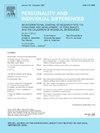欺凌、受害和幸福感的风险和保护因素之间的纵向网络关联:反欺凌干预的效果
IF 2.6
2区 心理学
Q1 PSYCHOLOGY, SOCIAL
引用次数: 0
摘要
目的:本研究探讨霸凌、受害和幸福感网络的差异,以及相关的保护和风险因素。在反欺凌干预与常规学年的青少年样本中,调查了网络差异。方法:671名学生(女生占52%;在三个时间点上,来自24所小学的学生参与了这项研究。采用多组滞后-1图形向量自回归交叉滞后面板网络模型,模型拟合效果良好。最终模型被修剪和引导(N = 100次重采样)。结果:几个变量表现出跨时间点的稳定性。交叉滞后关联在干预组和对照组之间有所不同。在没有干预的情况下,只有当对受害者的同情增加时,防御才会增加,而社会自我效能感会减少欺凌和道德脱离。在干预组中,防御与幸福感的联系更加紧密,在受害和欺凌之间出现了不利的反馈循环。干预学校和对照学校的同期效应相似,并显示出预期的关联,如道德脱离与欺凌行为之间的正相关关系。结论:反欺凌干预改变了校园欺凌、受害和幸福感相关因素的动态相互作用。虽然结果基本上是积极的,但也出现了一些不利影响,这可以指导未来的研究。本文章由计算机程序翻译,如有差异,请以英文原文为准。
Longitudinal network associations between risk and protective factors for bullying, victimization, and well-being: Effects of an antibullying intervention
Objective: The present study explored the differences in networks of bullying, victimization, and well-being, along with related protective and risk factors. Network differences were investigated in adolescent samples following an antibullying intervention vs. regular school year. Methods: A sample of 671 students (52 % girls; Mage = 10.3 years) from 24 elementary schools participated across three time points. A multigroup lag-1 graphical vector autoregressive cross-lagged panel network model was employed and yielded an acceptable model fit. The final model was pruned and bootstrapped (N = 100 resamplings). Results: Several variables demonstrated stability across time points. Cross-lagged associations differed between intervention and control groups. In the absence of intervention, defending increased only when empathy for victims increased, while social self-efficacy reduced both bullying and moral disengagement. In the intervention group, defending became more interconnected with well-being, and an adverse feedback loop emerged between victimization and bullying. Contemporaneous effects were similar across intervention and control schools and showed expected associations, such as positive interrelatedness between moral disengagement and bullying perpetration. Conclusions: The antibullying intervention changed the dynamic interplay of factors related to bullying, victimization, and well-being in schools. While the outcomes were largely positive, some adverse effects emerged, which could guide future research.
求助全文
通过发布文献求助,成功后即可免费获取论文全文。
去求助
来源期刊

Personality and Individual Differences
PSYCHOLOGY, SOCIAL-
CiteScore
8.50
自引率
4.70%
发文量
577
审稿时长
41 days
期刊介绍:
Personality and Individual Differences is devoted to the publication of articles (experimental, theoretical, review) which aim to integrate as far as possible the major factors of personality with empirical paradigms from experimental, physiological, animal, clinical, educational, criminological or industrial psychology or to seek an explanation for the causes and major determinants of individual differences in concepts derived from these disciplines. The editors are concerned with both genetic and environmental causes, and they are particularly interested in possible interaction effects.
 求助内容:
求助内容: 应助结果提醒方式:
应助结果提醒方式:


